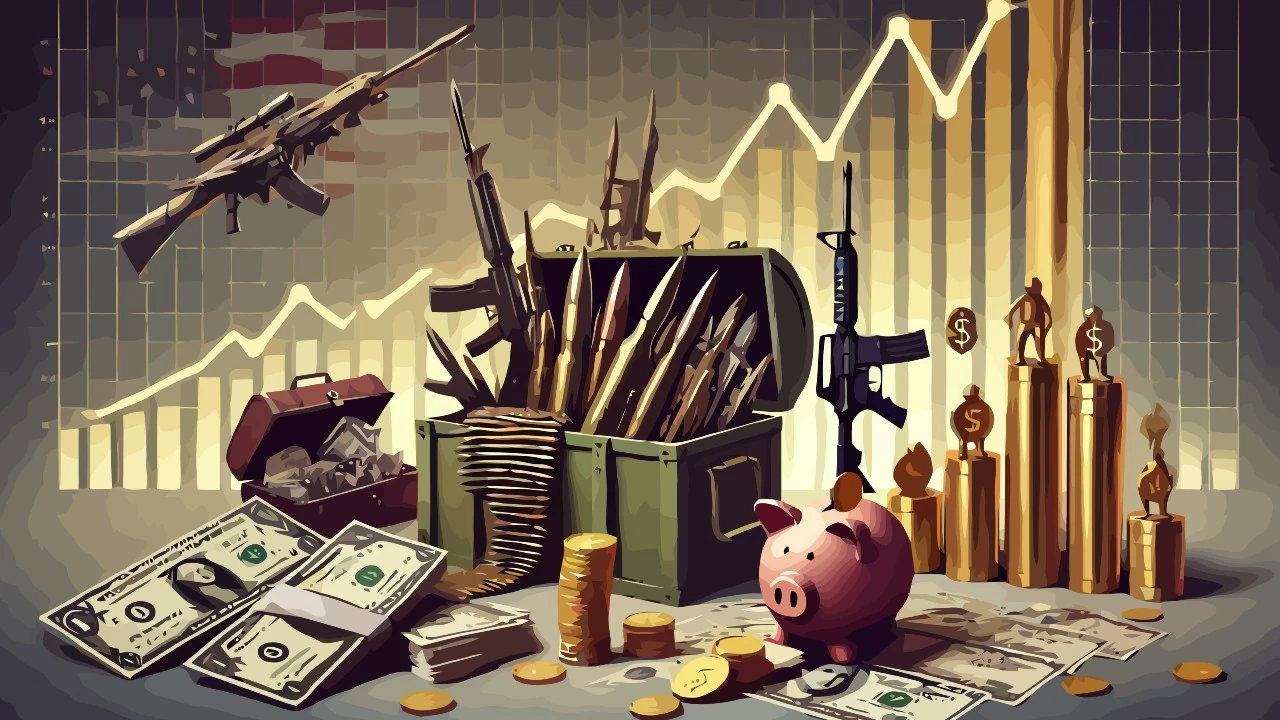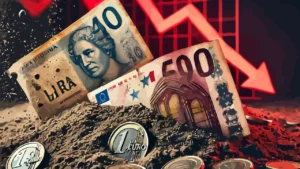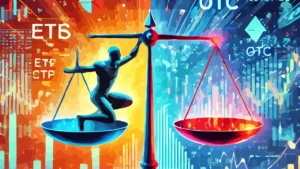Military spending is a major budget item for many states and is essential to ensure national security and sovereignty. However, this spending does not directly generate wealth, but rather is a necessary cost. Unlike investments in infrastructure or education, defense spending does not produce goods or services intended for economic growth.
In the past, war could be a means to obtain resources and territories, making military investment potentially profitable. Today, however, the international context imposes forced rearmament without any direct economic return, with potential risks for financial stability.
Contents
#1. Necessity and economic implications
Military spending is essential to ensure national security and geopolitical stability. Every state needs a defense apparatus to protect its territory, strategic infrastructure and citizens. However, from an economic point of view, these expenses do not lead to a direct growth in productivity or national wealth. While investments in sectors such as education, health or infrastructure generate added value and improve the well-being of the population, the money spent on weapons and armies has a return limited to the defense function alone.
Another critical aspect concerns the “crowding out” effect of military spending: the more a government invests in defense, the fewer resources remain available for other productive sectors. This can lead to a slowdown in the economy, as the capital invested in the military sector does not produce innovation or growth outside of this area. Furthermore, the costs of maintaining armies and military infrastructure are constant and not compressible, making these expenses a lasting burden on state budgets.
Despite these limitations, some countries see defense as an economic engine, particularly where there is a strong arms industry. In the United States, for example, the military-industrial complex provides employment to millions of people and drives technological innovation. However, for most countries, increased military spending represents more of a cost than an economic opportunity, especially in times of financial crisis.
#2. Military investments and productivity
From an economic perspective, an investment is considered productive when it generates a return in terms of growth and development. Military spending, on the other hand, can hardly be classified in this category, since it does not lead directly to the production of goods and services for the civilian market. While a car factory or a technology company can create products that improve daily life and stimulate the economy, companies in the military sector operate in a closed and specialized context, with few outlets outside of defense.
Another limitation of military spending is its lack of flexibility. If a country invests huge resources in the construction of warships, tanks or missiles, these resources cannot be easily converted to civilian use. Furthermore, the life cycle of military technologies is short: what is considered cutting edge today can become obsolete in a few years, forcing governments to continue investing without an effective economic return.
However, there are some exceptions. In the past, several technological developments born for military purposes have found application in the civilian field. Among the most famous examples we can mention:
- Internet: Initially developed for military communications, today essential to the global economy,
- GPS: born as a positioning system for the armed forces, today used everywhere,
- Aerospace materials: such as light alloys and radar technologies, which have had spillover effects into civilian industry.
Despite these cases, the technological transfer from defense to the civilian sector remains limited and does not justify the enormous amount of resources employed in the war sector.
#3. From military inventions to civilian
Technologies developed in the military have, in some cases, contributed to important advances in civilian industry. As already mentioned, the Internet and GPS are striking examples of how war research has led to innovations of widespread use. However, the number of technologies that manage to make this transition is relatively small.
One reason for this limited applicability is the very nature of military technologies, which are often too specific or expensive to find civilian use. While a ballistic missile or a tank have strategic value, there are no direct civilian uses for these tools. Furthermore, military technologies are generally subject to tight controls and industrial secrecy, making their transfer to the private sector difficult.
Another aspect to consider is the cost of military innovations. Many research and development projects in the military field require billions of dollars in investments, with very long lead times. If compared to the development costs of civilian technology, these projects are often less efficient and difficult to adapt to non-military needs.
All this confirms that, although there are cases of technological transfer from the military to the civilian sector, they remain limited and do not justify the enormous amount of resources allocated to defense. This reinforces the idea that military spending represents more of a strategic cost than an investment in overall economic growth.
#4. War as an investment
Historically, war has often been considered an economic opportunity. Ancient empires, such as the Roman or Ottoman, expanded their territories with military campaigns aimed at acquiring new resources, populations to subdue and productive activities to integrate. In this context, war could represent a profitable investment, since military costs were offset by the incorporation of material wealth and manpower.
Sun Tzu, in his famous treatise “The Art of War”, stated that conflicts must be short and decisive, since wars that are too long risk draining a nation’s economic resources. This principle has been applied by many conquerors, from Alexander the Great to Napoleon, who aimed to obtain the maximum economic benefit with the minimum expenditure of resources. However, the modernization of economies and the evolution of international law have made wars of conquest less practicable.
Today, war is no longer a means of economic expansion, but only a cost. Modern nations, in fact, can no longer appropriate with impunity the resources of a conquered country without incurring heavy international sanctions or destabilizing global markets. This has made the concept of war economically unsustainable, transforming military spending into a cost without a tangible return, except in terms of deterrence.
#5. Global threats and rearmament
In the current context, several geopolitical factors are pushing Western nations to increase military spending. Among the main emerging threats are Russia’s expansionism, China’s growing influence, and the spread of extremist ideologies of Islamic origin. These problems are forcing governments to invest more and more in defens, realigning strategic priorities after decades of reductions in military spending.
After the end of the Cold War, many Western states drastically reduced their military capabilities, believing that they could enjoy a long period of peace. However, the war in Ukraine, tensions in the Pacific, and instability in the Middle East have shown that disarmament was a mistake. The current rearmament is not an extraordinary cost, but rather a return to the levels of spending necessary to face new global threats.
Despite the necessity of rearmament, the economic problem remains: military spending, while a necessity, does not generate wealth. This is a cost that is set to grow in the coming years, but which risks further aggravating public budgets already under pressure. This could lead many governments to have to choose between security and financial stability, creating further economic tensions.
#6. Consequences of military spending
The increase in military spending has direct implications on the economic policy of states. When a country invests significant resources in the defense sector, it can do so in two ways:
- Increasing public debt: to finance military spending could lead to an increase in the deficit and a reduction in the state’s capacity to invest in other sectors,
- Expanding the money supply: if not supported by a corresponding growth in the production of goods and services risks fueling inflation, reducing the purchasing power of money.
In times of economic uncertainty and geopolitical instability, investors tend to seek refuge in safe assets, such as gold. If military spending continues to grow without a tangible economic return, we could see safe-haven assets strengthen relative to traditional currencies. Gold, in particular, could benefit from the loss of confidence in fiat currencies, as often happens in times of international crisis.
In conclusion, while rearmament has become a geopolitical necessity, its economic impact remains an unsolved problem. The more a country invests in defense, the fewer resources are left available for sectors that could actually generate economic growth. The risk is that excessive military spending could become a burden on national economies, increasing debt and pushing towards a currency devaluation with possible repercussions on global markets.











Leave a Reply